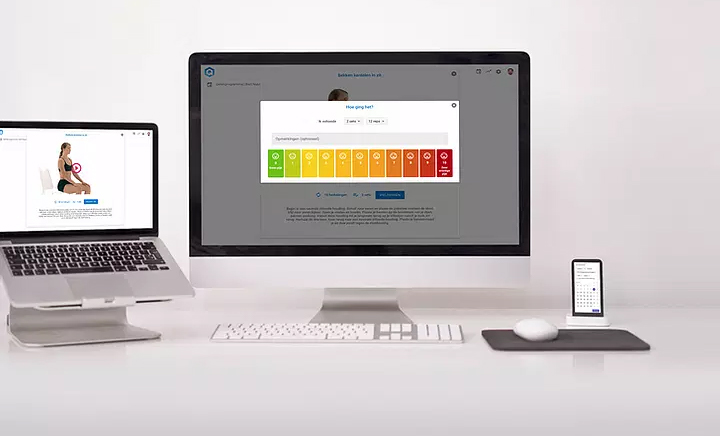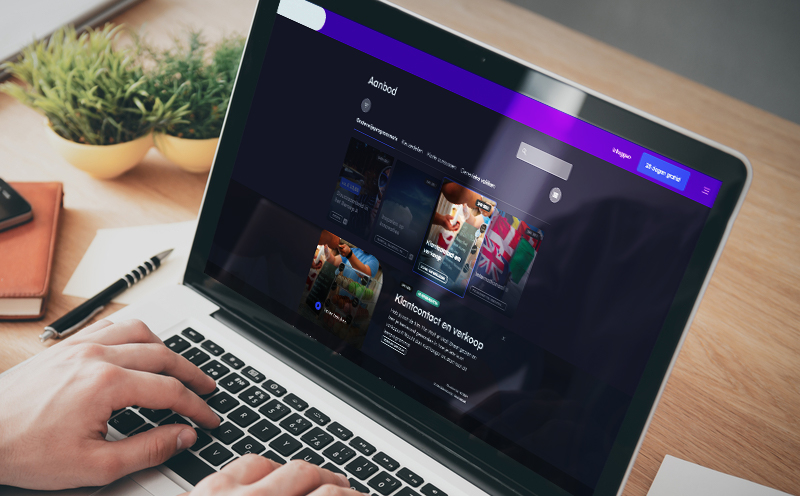More and more companies depend on their software to help their business thrive. Whether it’s about automating business processes, connecting employees and customers, achieving (and maintaining) competitive advantage or SaaS (Software as a Service); good software is at the foundation of any successful company.
What is Custom Software?
Custom software is software that helps your business to maximize efficiency and increase profits. It contains exactly those functionalities that your company needs, without having to adjust the internal processes. It takes existing business processes into account and delivers value by linking, optimizing, automating or improving them. The possibilities are endless, for example: a portal for customers, e-commerce applications, a calculation or comparison tool, a knowledge platform, an extensive CMS (Content Management System) or the link between all these processes.
Let's chat!

The difference between off-the-shelf software and custom software
It’s not always easy to know when to pick an existing software package and when to choose for custom software that has been built to precisely meet your requirements. We have listed the most important advantages and disadvantages for you:
Benefits of packaged software
- Extensively tested by other companies (and therefore often more stable);
- Relatively lower costs;
- Rapid implementation;
- You are not responsible for keeping the software up-to-date.
Disadvantages of packaged software
- You pay for features you may not use;
- Can also be used by your competitor;
- Options are often 'standard';
- You adapt your business processes to the software instead of the software adapting to your specific wishes.
Benefits of custom software
- Exactly those functionalities you need (and the option to add extra functionalities without any worries);
- Custom software adapts to your processes and seamlessly links various systems together. For example, think of time registration, web applications and data systems;
- Maintain competitive advantage: your unique work process with which you add value will continue to exist;
- Customization is scalable: even if you are going to grow enormously in the coming years or make different demands on business processes, custom software will move with you.
Disadvantages of custom software
- Implementation often takes longer;
- Relatively higher costs;
- Choosing the right IT partner is crucial: not every party guarantees quality or, for example, transfers the intellectual property of software.
Whitepaper: The challenges of software outsourcing
When you’ve decided that bespoke software is the way to go for your specific challenge, you will be faced with a mountain of options. You’ll probably have a lot of questions like: Shall we choose for in house development or are we hiring an external agency? How do I find a party with expertise without paying too much? Do I prefer fast programmers or am I looking for quality? And how do you actually assess the quality of a developer? Especially with software that is essential for your business processes, a wrong choice can cause a lot of headache; like extra costs, safety risks and/or quality problems. Picking a reliable developer is therefore not an easy task. We wrote a whitepaper (in Dutch) in which we list different options of software outsourcing. It’s filled with various advantages and disadvantages of all of these options to help you prevent (costly) mistakes. This way you can always make a responsible choice for the outsourcing (or not) of your software project.

Download the do's en don'ts of development outsourcing
Using a new or old codebase?
The difference between having new software built or older software updated
Often companies have existing software that was custom made several years ago. If that software no longer meets all the requirements, the question is whether you can continue to develop on what is already there, or whether more benefits can be gained with a clean slate. Which choice is appropriate has everything to do with the current state of your software. If you have a stable codebase and your current software has been kept up-to-date, then further development on that existing codebase is the most sensible cost-efficient option. However, if your software is outdated, not as stable as you'd like or if it can't handle current demand, it's a good idea to take a look at the basics and maybe rewrite it from scratch.
The risk of outdated software
No company lets its software become obsolete on purpose. We regularly see situations where a software product needs to grow faster than the development team can handle. There are less hours available than preferable, which means that new functionalities or bug fixes are implemented ‘quick and dirty’ instead of sustainable. If such a situation dwells on for too long, it will eventually affect the stability of the software. The risk of developing on outdated software is that you could be building on an unstable foundation. Without trust in your software, growth will stagnate; you’ll become more careful with new deployments, updates and functionalities and you’ll lose exactly those advantages that make custom software so valuable.
A company that approached us with exactly this problem is Smartfile. Smartfile provides an all-in-1 software package to physiotherapists with an enormous amount of functionalities. Because their clients work with medical information inside their software, we decided to tackle the complete codebase and put privacy and security first.

What does custom software look like?
The big advantage of customization is that you determine exactly what you need and therefore also what it should look like. While some companies have a very clear picture in mind, others have a more general plan. If the exact interpretation is not clear enough yet, we like to index the requirements and functionalities in a so-called digital product design; By making an inventory of the various requirements, functionalities and their priorities, we can also make a good estimate of the ultimate development costs.


Do you want custom software for your company?
Does your company need software that is specially designed to optimize your business processes? Or could your current customization use an update? Get in touch with Bas to discuss the wishes of your company. We will gladly give you an indication of the possibilities at 10KB to take your software to a higher level.